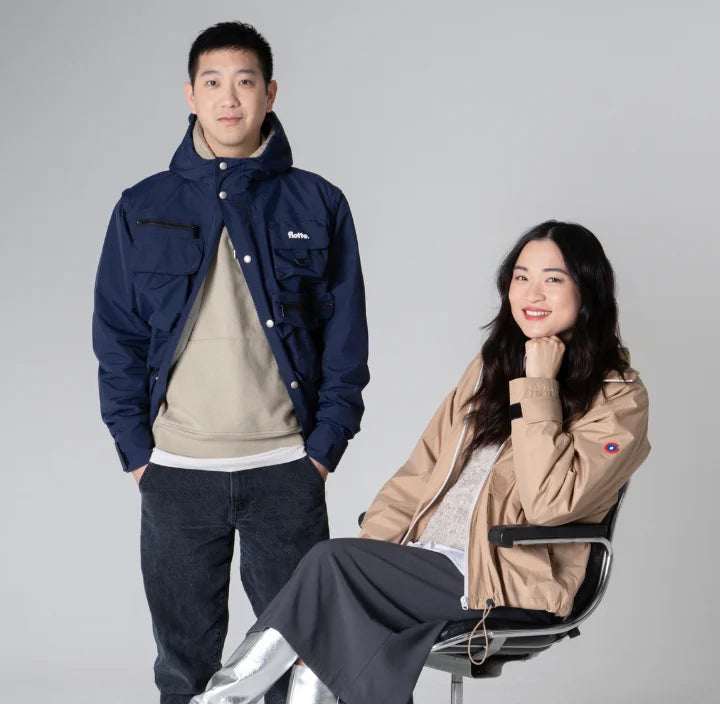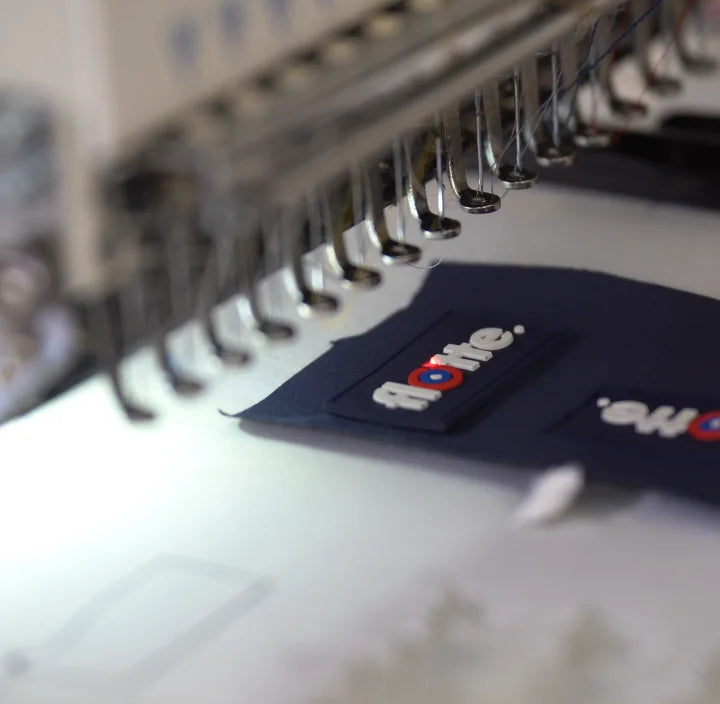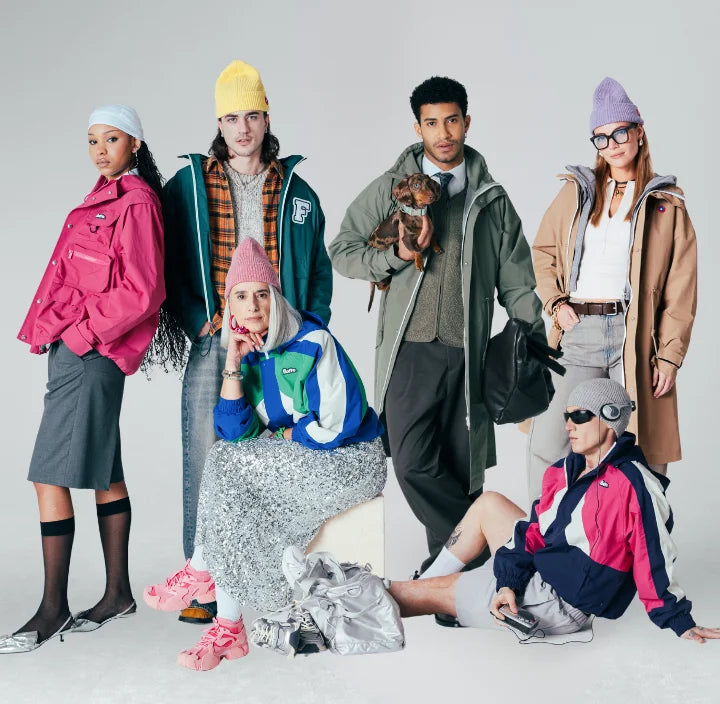Have you ever met in the rain for several hours? Fortunately, you wore a raincoat! But how does he manage to keep you dry? Today, the editorial Flotte deciphers the secrets of waterproofing (or how to ensure quality protection!).
WATERPROOF, WATER-REPELLENT, WATERPROOF, WHAT'S THE DIFFERENCE?
To start, it is important to grasp the nuance between these notions that are too often confused.
A fabric garment spout Go act so that the drops of water that fall on you simply slide on its surface. The goal is to avoid absorption of water by the fabric and, ultimately, to keep you dry as best it can.
The raincoat Acts in the same way, with the difference that it also prevents absorption of water when there is stagnation or pressure on the fabric of your garment. This detail, which may seem futile, is actually very important and to take into account when you go in search of clothes to protect you from water. Indeed, a water repellent will not keep you dry as long as a raincoat since, under too large pressure (that of the handles of a backpack for example), water is likely to infiltrate the fabric and suddenly, to wet you☔
Clothes tightness, for their part, are waterproof clothes and whose seams have been worked to keep the room waterproofing. The seams are thus heat -bodied or welded by ultrasound. So yes, waterproof means that the water will not come in. But a waterproof garment will not let the water vapors emitted, inside your body. Thus, it is very likely that you will be wet under your jacket because of your own perspiration (and not the rain).
HOW ARE CLOTHES WATERPROOFED?
There are two techniques to waterproof the fabrics:
The coating
A water -repellent coating is applied to the internal surface of the garment. This material is useful because it actually helps prevent water from penetrating the fabric, but also because it can escape the heat and the water produced by the body!
If, at first glance, this technique seems to be a good solution, it is in fact only temporarily. The jackets or other waterproofing products by Enduction will allow you to face light rain. For example, they will make a troubleshooting in case of surprise rain. But during big showers, it will not be the products that will protect you the longest.
In principle and generally, the coating method is used when adding a "bonus" function to a base garment intended for another function. A coat for example is doomed to keep hot, but it can as well be a waterproof minimum to be more useful for its holder, more “Passe-Partout”.
The membrane
It is a hydrophilic film that is also applied to the inner side of the garment. In this way, the membrane prevents water from penetrating from the outside inward, but it also allows all the water vapor produced by the body to escape! For example, your raincoat Amelot will leave in the water, coming from all walks of life, all his freedom!
You will tell us: yes, like the coating in fact ... Well no, the difference is that the membrane is more durable and more breathable, in addition to being waterproof. It allows you to keep you dry much longer than with a simple coating, a method with which the applied coating can deteriorate more quickly over time. You will keep a clothing waterproofed by membrane longer in your life.
This technique is therefore the most effective, but it also applies to him to be more expensive than the first.
WATERPROOFING TESTS AND SCHMERBER INDEX
Now that you know all about waterproofing techniques, we're going to tell you how to go about testing waterproofing. Because yes, making a fabric waterproof is good, but testing its effectiveness and quality is even better!
Once again, there are several testing techniques.
The first is the water column test. This test measures the fabric's resistance to water pressure. Technically, how does it work?
The waterproof fabric is simply placed under a column of water. The column fills up until the water penetrates the fabric. After this, the number of millimeters of water reached in the column as the fabric is pierced can be measured, giving the result, and therefore the waterproofing index.
When we talk about this waterproof index, we say that the garment resists , for example, 2000 mm of water, which is equivalent to 2000 Schmerber.
The second test is the shower test 🚿 More effective than the first, it tests the whole garment. Indeed, you'll soon realize that while testing the fabric is useful and gives a good indicator of waterproof quality, on a jacket there are also parts that are more exposed to water, more accessible and more sensitive: the zips, for example.
So testing the entire product as if it were in heavy rain is the ultimate test of its true water resistance. In any case, the result obtained will be the most reliable and closest to reality.
The process is quite simple: the garment is placed under a shower-like device, hence the name, and sprayed with a large quantity of water. In this way, it's possible to see whether water is seeping through, not only the fabric, but also the seams, zips and other sensitive areas.
Understanding the Schmerber index
If the name of this index sounds complicated, it's simply that it's taken from the name of its inventor: Charles-Edouard Schmerber.
1 mm of water = 1 Schmerber 1000 schmerber = it took 1 m of water in the column before it pierced the fabric
A garment with a water resistance of 10,000 mm will keep you dry for about an hour in a good rain or surprise shower. It will also keep you dry if a light rain persists throughout the day, for example.
On the other hand, in extreme conditions, subject to humidity and the presence of lots of water(or if you're planning to do Koh Lanta), you're better off with much more technical clothing and equipment, with a resistance of at least 20,000 schmerber!
Remember that waterproofing is subject to the conditions of life: the pressure exerted on a waterproof fabric is likely to reduce its effectiveness! For example, just as the pressure of a bag's handles on a waterproof jacket, the pressure of a support or an object placed on a tent also threatens its waterproofing.
That's right! If you're an avid camper, you're probably already aware that tents have different degrees of water resistance on their floor and outer walls. The floor fabric needs to be more waterproof than the other edges, as it is almost constantly subjected to the pressure of a mattress. So, to make sure your groundsheet stays dry, it's important to pay attention to these details too when you go camping ⛺️
AT THE HOUSE OF FLOTTE, Our recycled raincoats are designed and designed to keep you dry!
You have understood, there are multiple methods to waterproof his clothes, but also to test them. And if all work and have the merit of existing, some prove to be more effective than others! But suddenly, at Flotte, What do we do?
> Our recycled and waterproof materials
We aim to produce a more eco-responsible fashion since our beginnings. So, if you know us, you are surely without knowing that the fabric of our raincoats is made up of 100% materials from recycling, in particular recycled plastic bottles, agro-food packaging or worn clothes♻️
These are the main waste that constitutes the rpet, the material to which we turned for the design of our raincoats. The RPET is also more simply called recycled polyester.
Learn more about the rpet
Then, in order to waterproof our clothes, we apply a membrane on the inner surface of our raincoats. We made the choice of the membrane because, more durable over time, it also promised greater efficiency against water and allowed your body to breathe more than with a simple coating. You are of course not safe from sweating a little by wearing it for a long time and in heavy weather, but that is the character of humans!💪
Our raincoats are all equipped with the same characteristics:
- resistant to 10,000 mm of water
- breathable at 10,000 g/m²/24 hours
They are so ideal for use in the life of every day. In addition to being waterproof, our jackets are breathable. But what does that mean?
> The breathability of the clothes
In fact, the breathability of a garment is its ability to evacuate water vapor. Thanks to good breathability, we avoid storage of water vapor inside the jacket. This water vapor is normal and inevitable, it is due to the sweating and unlike temperature between your body and the outside temperature. A good breathability is therefore the key to being comfortable in its waterproof coat.
> Waterproof tests
To ensure that water doesn't get through our raincoats (in which case they wouldn't be 😅 ), we carry out the two tests detailed above: the water column test and the shower test. These tests are carried out in a French laboratory in Lyon. We do our utmost to determine the water resistance of our garments by testing both the main fabric and the entire garment.
The water column test is the first step in ensuring that our fabric is waterproof. The shower test guarantees total waterproofness.
Plot twist : our raincoats are waterproof. They withstand up to 10,000 mm of water pressure and are breathable, so you're ready for a shower or a whole day of light rain! So, if you're looking for the perfect companion for your adventures (everyday or a little crazy), our colorful, recycled raincoats are made for you!
PS: After reading this article, you'll also be able to boast that you know everything there is to know about waterproofing 🌈

























Bonsoir,
Est-ce que vos doudounes sont étanches à 10 000 mm d’eau aussi ?
Merci !
Leave a comment